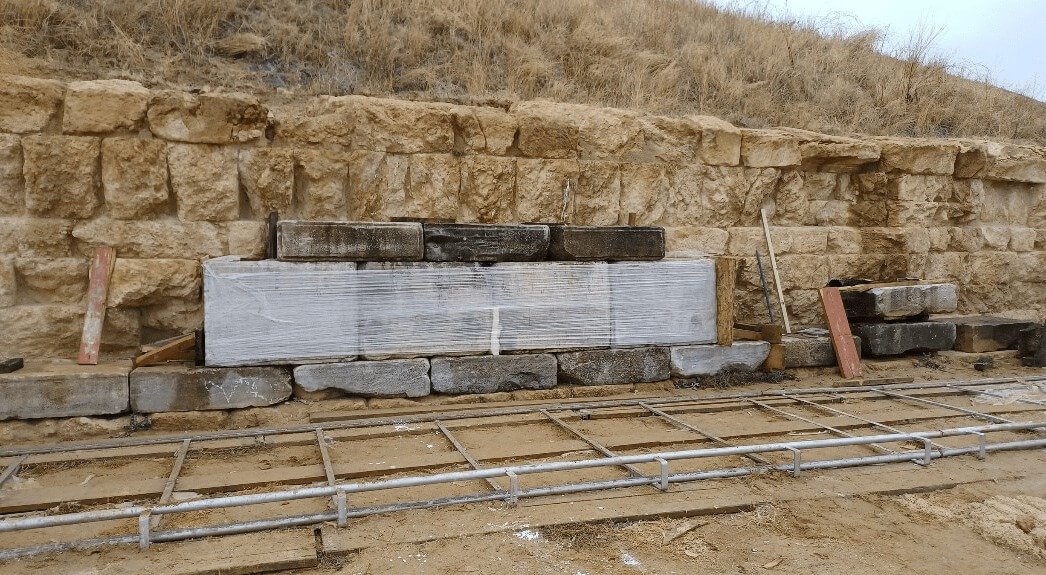The didactic restoration of part of the ancient precinct of the Kasta Tomb, which is being implemented by the Department of Restoration of Ancient Monuments of the Greek Ministry of Culture and Sports as part of the project of fixing and restoring the monument, is being completed.
Based on the approved architectural study by the architect Michalis Lefantzis, 25 scattered marble members were identified and assigned to their original position out of the 375 that, in 2019, were collected, grouped, and arranged in the western part of the tomb, arranged in groups according to the type and structure that belonged to the ancient masonry.
As stated by the Minister of Culture Lina Mendoni, "these 25 architectural members are returning to their original position after 21 centuries, having been moved, at times, kilometers away from the monument, bearing the wear and tear of time but also damage to its surfaces from human intervention due to the successive changes of use. In order to maintain their authenticity, the scattered marble members were placed in their identification positions as they are, without additions, so that they will always bear witness to their centuries-long history."
In order to assign the members to the place where they belonged, an architectural document was made of the scattered material and the object, which indicated that the tallest members belong to the southern part of the enclosure, near the Burial Monument. Also, a key performance parameter was the change in the direction of the pegs and lever holes, which indicated the opposite direction of placement of the enclosure members by at least two different workshops during its construction.
From the study, it emerged that the point where the members were assigned, in the southern part of the enclosure and 22 m west of the Burial Monument, resulted in the two opposite, mutually, times of placement during construction.
The majority of the marble members are in good structural condition, with the exception of two: a post and a plinth with broken sections, which did not require filling for their installation.
To support the marble members, artificial stone fillings were made in the broken, missing masses of the stone plinths of the ancient counter, and the mortises and grooves of the ancient links were reused.
In the execution of the project, the assistance of the six most experienced marble craftsmen of the Ministry who came from the South Slope of the Acropolis of Athens to Amphipolis for its timely completion played a very decisive role.
As part of this project, the Department of Restoration of Ancient Monuments is continuing the fixing and restoration work on the tomb and the outer shell of Room 1.
















